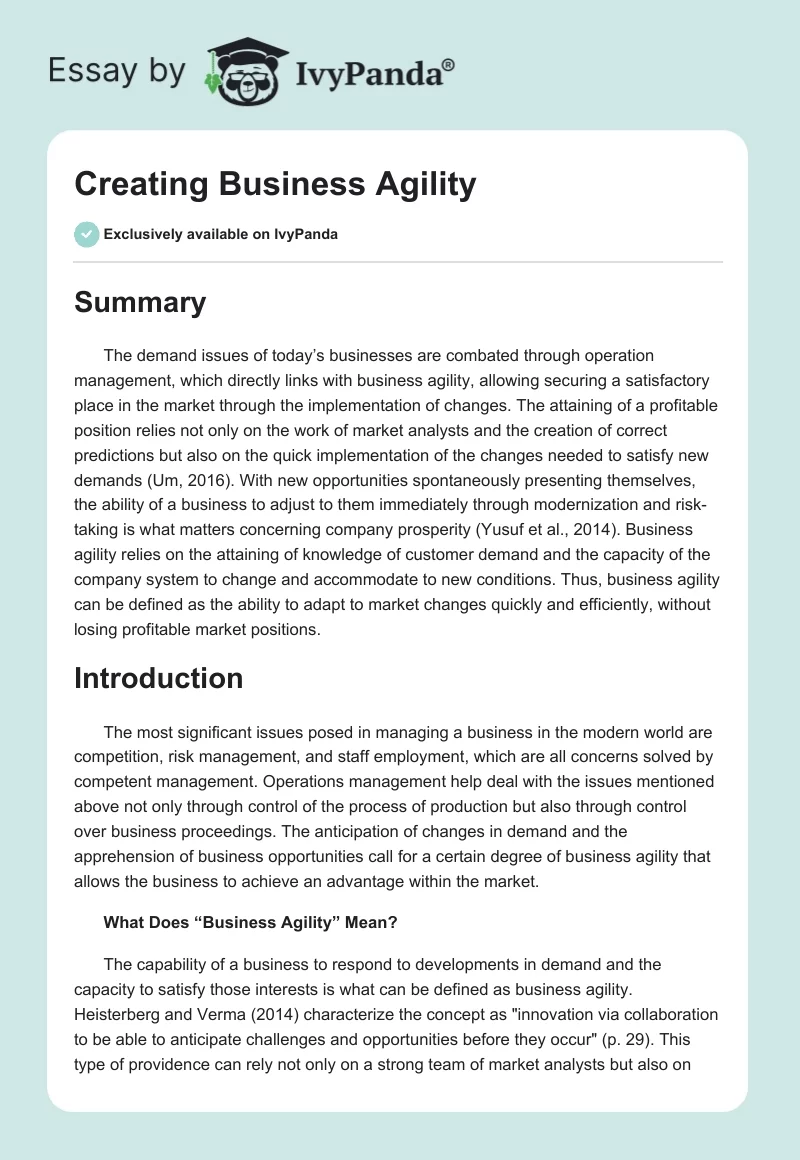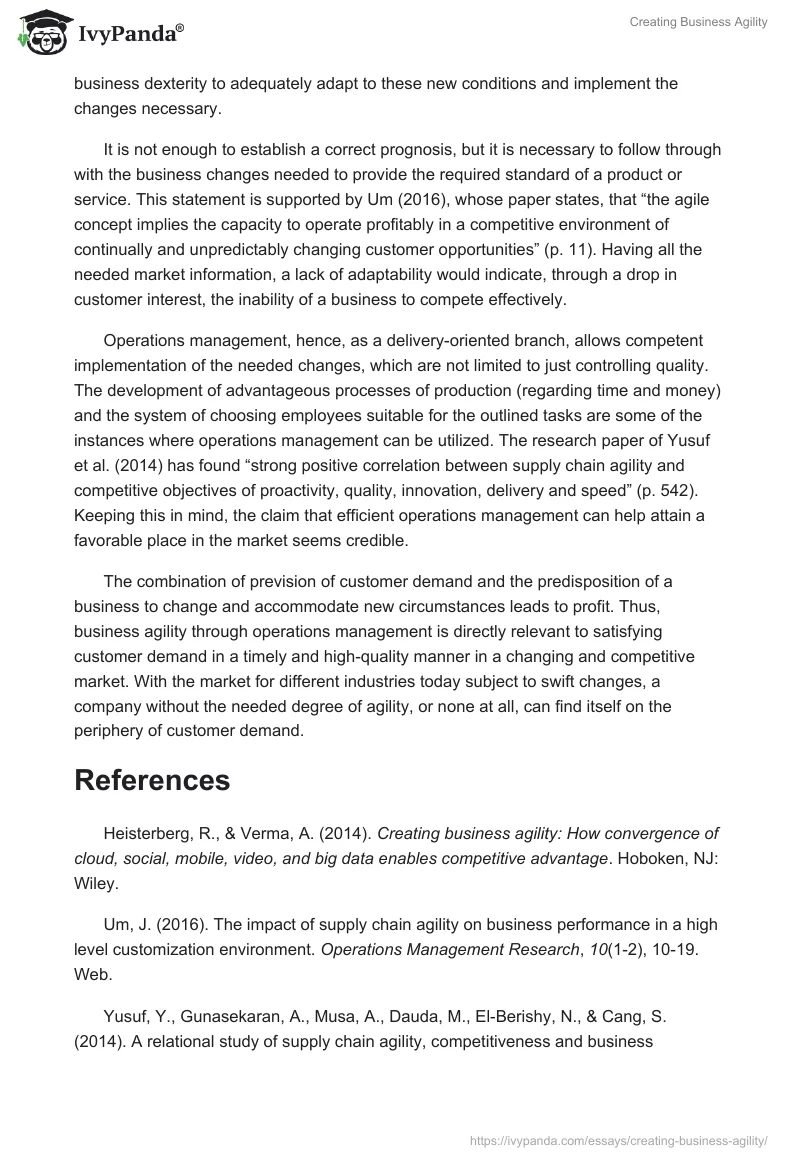Summary
The demand issues of today’s businesses are combated through operation management, which directly links with business agility, allowing securing a satisfactory place in the market through the implementation of changes. The attaining of a profitable position relies not only on the work of market analysts and the creation of correct predictions but also on the quick implementation of the changes needed to satisfy new demands (Um, 2016). With new opportunities spontaneously presenting themselves, the ability of a business to adjust to them immediately through modernization and risk-taking is what matters concerning company prosperity (Yusuf et al., 2014). Business agility relies on the attaining of knowledge of customer demand and the capacity of the company system to change and accommodate to new conditions. Thus, business agility can be defined as the ability to adapt to market changes quickly and efficiently, without losing profitable market positions.
Introduction
The most significant issues posed in managing a business in the modern world are competition, risk management, and staff employment, which are all concerns solved by competent management. Operations management help deal with the issues mentioned above not only through control of the process of production but also through control over business proceedings. The anticipation of changes in demand and the apprehension of business opportunities call for a certain degree of business agility that allows the business to achieve an advantage within the market.
What Does “Business Agility” Mean?
The capability of a business to respond to developments in demand and the capacity to satisfy those interests is what can be defined as business agility. Heisterberg and Verma (2014) characterize the concept as “innovation via collaboration to be able to anticipate challenges and opportunities before they occur” (p. 29). This type of providence can rely not only on a strong team of market analysts but also on business dexterity to adequately adapt to these new conditions and implement the changes necessary.
It is not enough to establish a correct prognosis, but it is necessary to follow through with the business changes needed to provide the required standard of a product or service. This statement is supported by Um (2016), whose paper states, that “the agile concept implies the capacity to operate profitably in a competitive environment of continually and unpredictably changing customer opportunities” (p. 11). Having all the needed market information, a lack of adaptability would indicate, through a drop in customer interest, the inability of a business to compete effectively.
Operations management, hence, as a delivery-oriented branch, allows competent implementation of the needed changes, which are not limited to just controlling quality. The development of advantageous processes of production (regarding time and money) and the system of choosing employees suitable for the outlined tasks are some of the instances where operations management can be utilized. The research paper of Yusuf et al. (2014) has found “strong positive correlation between supply chain agility and competitive objectives of proactivity, quality, innovation, delivery and speed” (p. 542). Keeping this in mind, the claim that efficient operations management can help attain a favorable place in the market seems credible.
The combination of prevision of customer demand and the predisposition of a business to change and accommodate new circumstances leads to profit. Thus, business agility through operations management is directly relevant to satisfying customer demand in a timely and high-quality manner in a changing and competitive market. With the market for different industries today subject to swift changes, a company without the needed degree of agility, or none at all, can find itself on the periphery of customer demand.
References
Heisterberg, R., & Verma, A. (2014). Creating business agility: How convergence of cloud, social, mobile, video, and big data enables competitive advantage. Hoboken, NJ: Wiley.
Um, J. (2016). The impact of supply chain agility on business performance in a high level customization environment. Operations Management Research, 10(1-2), 10-19. Web.
Yusuf, Y., Gunasekaran, A., Musa, A., Dauda, M., El-Berishy, N., & Cang, S. (2014). A relational study of supply chain agility, competitiveness and business performance in the oil and gas industry. International Journal of Production Economics, 147, 531-543. Web.


